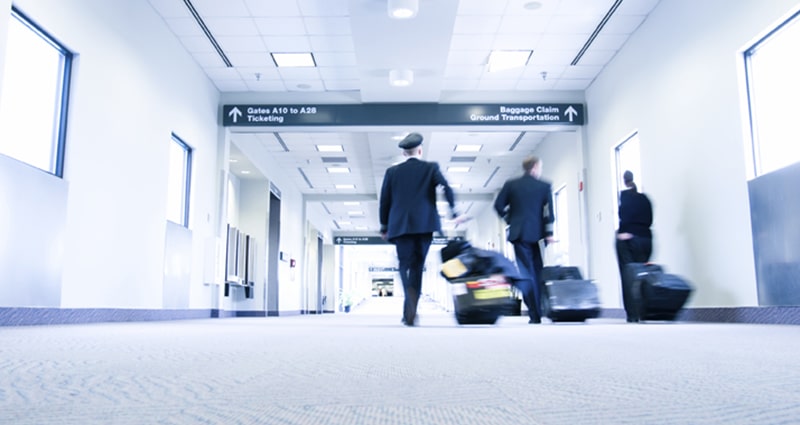How Many Flight Crew are Needed to Operate Safely?

The topic of appropriate pilot and flight attendant staffing levels can be a delicate, even emotional, subject.
Virtually every business aviation leader struggles with answering: “How many maintenance technicians, pilots and flight attendants do we need on our staff to:
- Maintain the highest safety and service levels to our travelers?
- Provide a healthy work/life balance for our aviation professionals?
- Be economically responsible?
Unfortunately, there are no “pat” answers, because there are operating variables in every organization. Some departments rely upon general industry guidelines, but the difficulty is that these guidelines can quickly morph into “absolute numbers” without considering the unique aspects of the organization’s travel patterns and operational requirements.
At Gray Stone Advisors, we prefer to focus upon each organization’s unique set of circumstances. The most important key is to work with the aviation-reporting executive to define and agree upon each of the relevant assumptions that impact staffing levels. To encourage productive discussions, incorporate similar techniques used when formulating an operating budget.
Let’s first discuss some important definitions:
- Work Day – When an employer has control of an aviation professional’s day (or night) (e.g., when a crew flies a two-hour trip, they really have worked a day, not merely two hours). Think in terms of “days of work” vs. “hours of work.”
- Day Off – When an employee has complete control of his/her activities without them being interrupted by the employer. If employees “can only see their days off in the rear view mirror,” their employer has a staffing problem.
Determining Crew Scheduling Needs
To determine appropriate staffing levels for pilots and flight attendants, look at the most influential elements:
- Labor Supply
- Trip Demand
- Schedule Match
Step One: Determine Labor Supply
Business aviation is a non-stop, service-driven function within a larger organization or a commercial business (as is the case with aircraft charter/management firms). As such, labor supply will be based on a 365-day-per-year basis, leap years excluded.
First, determine the number of days each person is available for a crew assignment, and review each job function separately: fixed wing pilot, rotary wing pilot and flight attendant, as well as management-level professionals who also fulfill a “line” role. A unique labor supply number will result for each flying role.
Step Two: Forecast Trip Demand
Next, determine future travel demand based upon past history, combined with an in-depth knowledge of the host organization’s future direction. Conversations with the firm’s senior leadership and most prolific travelers can help create a realistic forecast of future travel demand.
Naturally, the time horizons will vary with the volatility of the corporation’s core business activity. Include the actual days of flying and Remains Over Night, as well as preparatory and fatigue-recovery days (e.g., if you support significant international travel across multiple time zones).
Step Three: Match Trip Demand to Labor Availability
Here’s where “art meets science.” The only real chance for a perfect match of “labor availability” to “trip demand” is if all trips are one day in duration, originating and concluding within a consistent, eight- to ten-hour period. But that phenomenon is hard to find in business aviation! In our 20 years at Gray Stone, only a handful of operations have had this scheduling profile.
The more common situation is represented by a wide distribution of trip durations—from one day to two weeks, combined with a high velocity of change to each trip’s itinerary.
Upon completion, the results will help determine the appropriate organizational headcount. Insights will include how many trip days are needed, the number of labor days (per role), and the likelihood of a match between trip demand and labor availability.
Work with an HR Partner
We highly recommend involving HR because it’s important to have the corporate-level support. When HR buys into an assumptions-based methodology, it creates greater alignment with corporate and helps everyone understand the unique aviation staffing considerations.
Since there’s no one-size-fits-all flight department, there’s no one-size-fits-all approach to staffing. Every department has a different need, so an assumption-based model is the only way to truly identify the best staffing number to suit your operation.
So if safety is your No. 1 priority, then take heed and follow this guidance. If you have any questions, please contact us for assistance.
About the Author
Jim Lara, Principal and Founder, Gray Stone Advisors
Combining more than 12,000 hours of piloting, 17 years as an aviation director and 4 decades of business experience, Jim Lara is a leading authority on how to run an aviation business within a business. And he knows how to do so safely.
For the past 20 years, Jim’s consulting firm, Gray Stone Advisors, has used its vast expertise and hands-on approach to help business aviation leaders learn to speak the language of business aviation. In doing so, Gray Stone’s team of advisors help develop high-performing individuals and teams, align those teams with their enterprise’s goals, and enable operations to regain stability, traction and profitability.
Jim can be reached at Javascript must be enabled to see email addresses. or 865-357-5077. Learn more about leadership development topics and how to speak the language of business aviation via the Gray Stone Advisors’ blog.

Gray Stone Advisors combines their experience both in leading businesses as well as business aviation operations to provide flight department leaders with proven strategies for excellence.
https://www.graystoneadvisors.com/
© 2025 Gray Stone Advisors. All Rights Reserved.
Next ArticleRelated Posts

Emerging Security Threats in Business Aviation: Activism and Down-Route Risks
Security incidents affecting business aviation do not need to involve violence to have an operational impact. A protest delaying crew movements, blocking access to a hangar or resulting in an unauthorized photograph of a sensitive client can all trigger reputational, financial or compliance concerns for operators.

Little Things Matter: The Lost Key of the Titanic
Ultimately, the story of the Titanic’s lost key is a call to action for aviation professionals. It underscores the need for unwavering attention to detail, robust systems to catch human error and a culture that prioritizes safety over haste.

